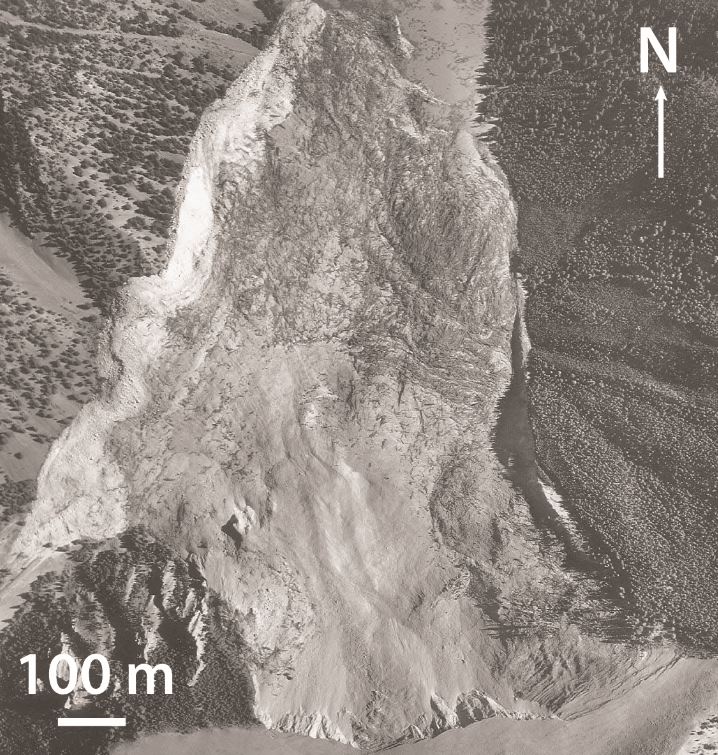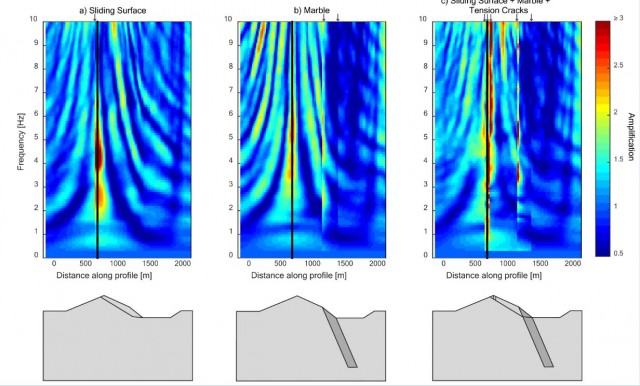22 February 2016
How do geomorphic and seismic processes cause large catastrophic landslides? A case study in Montana, USA
Posted by Dave Petley
How do geomorphic and seismic processes cause large catastrophic landslides? A case study in Montana, USA
By Andrea Wolter, ETH Zurich
Although much research has been conducted on seismically triggered landslides, the long-term effects of seismicity on rock slopes and their interaction with other actors such as geomorphic processes remain poorly understood. In a recently published paper (Wolter et al. 2015) we investigate the 1959 Madison Canyon Slide in Montana, USA, the most devastating secondary hazard of the M 7.5 Hebgen Lake earthquake. We combined geotechnical surveys, long-range terrestrial digital photogrammetry, engineering geomorphology mapping, and 2D numerical simulations in an integrated approach to understand the conditioning factors, mechanics, kinematics, and evolution of this catastrophic event and metastable rock slopes in general.

Aerial photograph of the Madison Canyon Slide (headscarp in the South), courtesy of the U.S. Geological Survey.
.
In our study we used field and photogrammetric geotechnical surveys, as well as laboratory tests, first to determine of rock mass and discontinuity properties at the site. Several discontinuity sets, including foliation, were identified. Interestingly, though, the landslide was not controlled by these discontinuity sets. Rather, composite surfaces incorporating multiple discontinuity sets appear to have acted as the main rear and lateral release surfaces.
Engineering geomorphology mapping aided in the delineation of ten landslide compartments or blocks within the deposit, as well as compressional and extensional zones, indicating how the rock mass failed. Post-event debris slides and rockfalls, as well as anthropic modification of the landslide deposits, were included in the evolution of the event, based on multi-temporal aerial images. Geomorphic processes such as undercutting of the marble unit at the base of the slope, gully incision, and weathering are thought to be relevant to slope failure.
Our preliminary seismic modelling highlighted the role of pre-existing compliant fractures in amplifying seismic waves, particularly at the crest of the slope (see figure). Topographic amplification was shown to be less critical. Simulation of multiple earthquakes in the models indicate the significance of seismic fatigue in slopes, leading to failure.

Amplification field plots for three discontinuity geometries at Madison Canyon. Warm colours represent areas of high amplification. These maximum amplification zones correspond to locations where compliant fractures intersect the model surface, indicating their importance. See paper for further explanation.
.
By combining the field, laboratory, and simulation results we were able to reconstruct a chronology of events at the Madison Canyon site, from the development of initial tension cracks at the crest of the slope and the cumulative damage of the rock mass to the triggering of the catastrophic failure and subsequent evolution of the deposits.
The broader implications of our paper are:
- the case study demonstrates that long-term seismic (earthquake) and geomorphic damage are important, yet often neglected, mechanisms in bringing a slope to failure; the seismic “past” of the slope (i.e., past earthquakes damaging the slope) may have had an important impact on stability.
- topographic amplification of seismic waves is less critical than damage amplification related to pre-existing and seismically induced discontinuities.
- the ability to determine reasons for the exact location of this landslide (topographic, geomorphic, mechanical, and seismic effects) contributes to the understanding of slope behaviour.
Reference: Wolter, A., Gischig, V., Stead, D., Clague, J.J. (2015) Investigation of geomorphic and seismic effects on the 1959 Madison Canyon, Montana, landslide using an integrated field, engineering geomorphology mapping, and numerical modelling approach. Rock Mechanics and Rock Engineering. DOI: 10.1007/s00603-015-0889-5.


 Dave Petley is the Vice-Chancellor of the University of Hull in the United Kingdom. His blog provides commentary and analysis of landslide events occurring worldwide, including the landslides themselves, latest research, and conferences and meetings.
Dave Petley is the Vice-Chancellor of the University of Hull in the United Kingdom. His blog provides commentary and analysis of landslide events occurring worldwide, including the landslides themselves, latest research, and conferences and meetings.